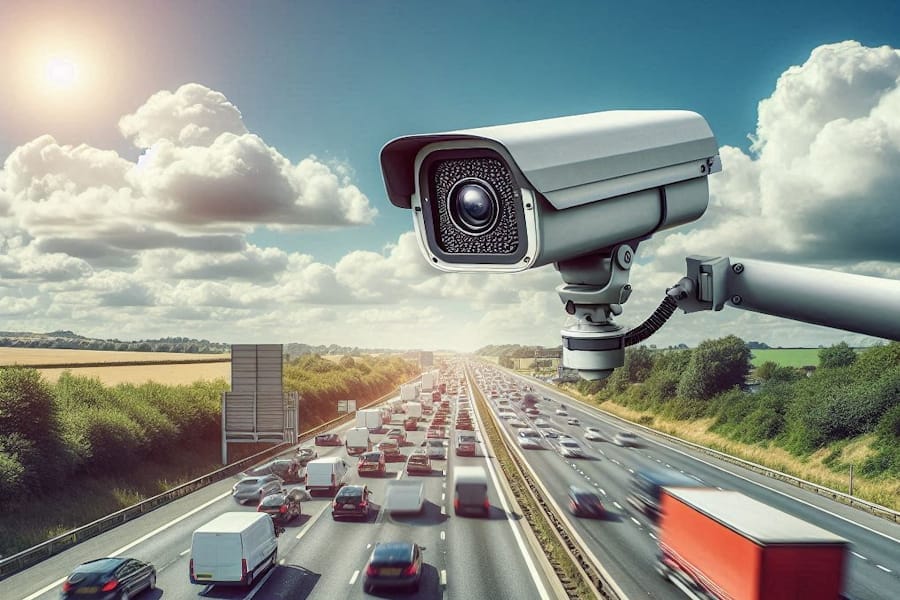AI-Powered Cameras Crack Down on UK Drivers: The Future of Traffic Enforcement
The UK has rolled out a new wave of AI-powered cameras designed to catch drivers violating traffic laws, with a particular focus on speeding, mobile phone use, and seatbelt compliance. These cutting-edge systems have already made a significant impact, leading to a surge in fines and penalties across the country. But how do they work, and what does this mean for motorists?
AI and Automation Meet Law Enforcement
The new AI-powered cameras use advanced image recognition and machine learning algorithms to identify traffic violations in real time. Unlike traditional speed cameras, these systems can detect a range of offences, including:
- Speeding violations – Capturing excessive speeds with pinpoint accuracy.
- Mobile phone use – Identifying drivers using handheld devices while in motion.
- Seatbelt non-compliance – Ensuring all passengers are safely buckled up.
- Lane violations – Detecting improper or dangerous lane usage.
According to UK law enforcement agencies, these cameras have already flagged thousands of drivers within weeks of implementation. “This is about improving road safety and holding drivers accountable,” stated a spokesperson for the Department for Transport (DfT). “AI technology allows us to monitor roads more efficiently and reduce accidents.”

A Surge in Fines and Offences
Since their initial trial phase in 2021, AI traffic cameras have detected over 2,300 offences in certain test areas alone. Recent data from Transport for London (TfL) suggests a 14% increase in speeding fines and a noticeable drop in seatbelt-related offences due to heightened enforcement.
One driver from Manchester, who received a fine for using his phone at a traffic light, shared his thoughts: “I didn’t even know these cameras could catch me while stationary. It’s like having Big Brother watching you everywhere.”
The move to implement AI-driven enforcement has divided public opinion. While safety advocates have praised the initiative for potentially reducing road fatalities, some motorists argue it’s an overreach of surveillance. The RAC has called for transparency in how the technology is being used: “Motorists deserve to know where these cameras are positioned and how the data is stored.”
Privacy Concerns and Data Security
With the increased use of AI in law enforcement, concerns over privacy and data security have emerged. Many drivers worry about how the captured footage is stored and whether it could be misused.
Civil liberties groups have raised concerns about AI-powered mass surveillance. Big Brother Watch, a privacy advocacy group, said: “AI-powered cameras set a worrying precedent. We need robust safeguards to ensure that driver data isn’t misused.”
However, the UK government insists that the footage is only used for traffic enforcement purposes. Data is encrypted and stored securely, with strict regulations governing its use. “These cameras are here to save lives, not invade privacy,” a DfT representative assured the public.
What’s Next? Expansion Plans and Future Technology
The AI camera network is expected to expand across the UK in the coming years, with thousands of units planned for installation in major cities. Authorities are also exploring additional features, including:
- AI-driven pedestrian safety monitoring – To detect jaywalking and improve urban traffic control.
- Autonomous emergency response alerts – Automatically notifying paramedics in the event of high-impact collisions.
- Integrated car compliance checks – Ensuring vehicles have valid MOTs, insurance, and road tax.
Government officials have hinted at a possible nationwide rollout by 2026, with many councils already securing budgets for AI traffic enforcement.
Final Thoughts: Necessary Innovation or Overreach?
While AI-powered traffic cameras promise safer roads and more efficient enforcement, they also raise significant ethical and privacy questions. Are they a necessary step towards reducing road fatalities, or do they represent excessive surveillance?
For now, motorists must adapt to the new AI-powered reality of driving. Whether you agree with the initiative or not, one thing is certain: AI is here to stay in traffic enforcement.

